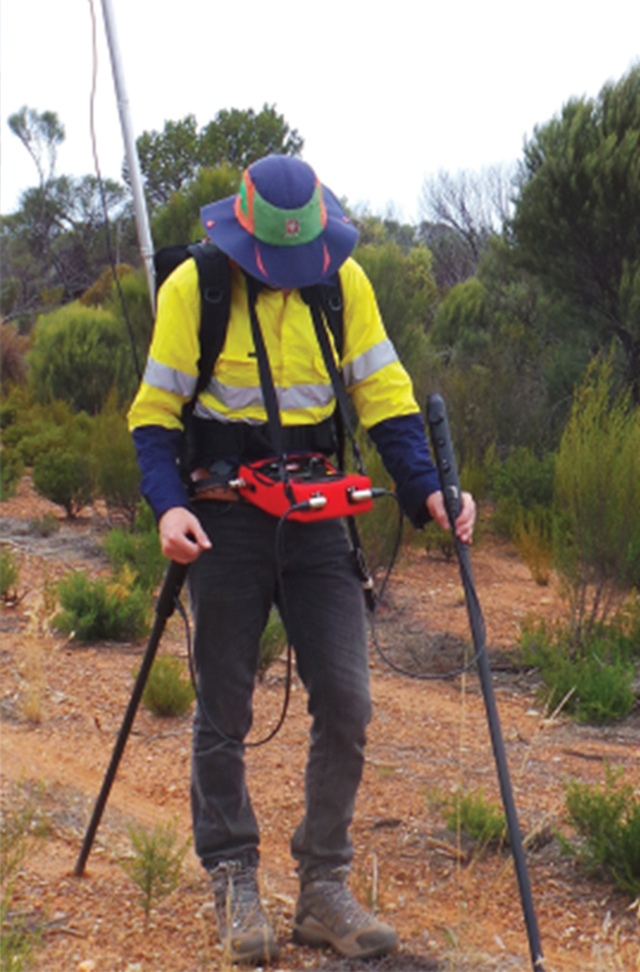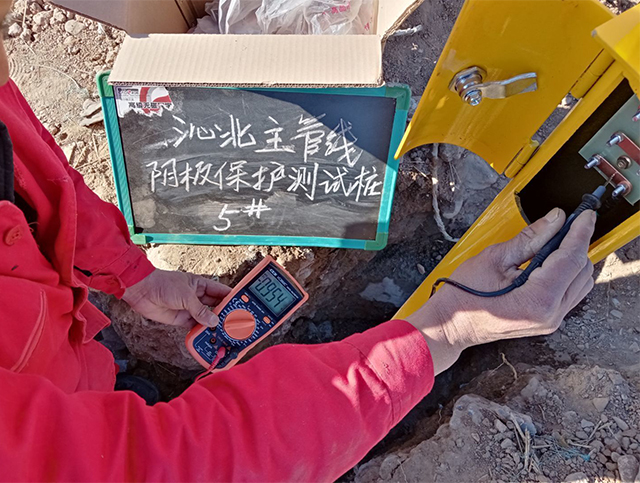Cathodic protection is a conventional method for corrosion control of buried pipelines. There are usually two ways to achieve this. One is to connect the pipeline with the cathode of DC current source, and use external protection
Cathodic protection is a conventional method for corrosion control of buried pipelines. There are usually two ways to achieve this. One is to connect the pipeline with the cathode of DC current source, and use external protection current to polarize the cathode of the pipeline. This method is called external current cathodic protection. The other is to connect a metal with relatively negative potential (such as zinc and magnesium) to the pipeline as an anode, and form a large battery with the pipeline in the electrolyte, so that the cathodic polarization of the pipeline body can reach a non-corrosive state. This method is called sacrificial anode protection.
In daily pipeline operation management, the conventional method to measure the operation state of cathodic protection is to measure the pipeline grounding potential with multimeter and reference electrode. However, in corrosion detection engineering, due to the influence of IR drop and the limitation of test pile position, it is necessary to measure the breaking potential of the whole pipeline. The detection instrument used is a close-spaced potential detector. This method can not only measure the protection potential at any position, but also eliminate the influence of infrared radiation decline.

Petroleum and natural gas pipelines are generally steel spiral welded pipes. Because they are buried underground, they will be corroded by transportation media, soil, groundwater and stray current, which will make the pipe wall thinner and even leak through holes, which will eventually lead to pipeline failure. Therefore, it is particularly important to carry out regular inspection on buried oil and gas pipelines. Because cathodic protection has been applied to oil and gas export pipeline network for many years, serious corrosion has occurred, and cathodic protection problems often occur frequently. Therefore, the effectiveness of cathodic protection is evaluated by on-site detection and analysis of relevant parameters of cathodic protection.
1. Positioning of buried steel pipeline body and detection of damaged points of anticorrosive coating.An alternating current signal is sent to the underground pipeline. When the anti-corrosion layer of the underground pipeline is damaged, a current path is formed at the damaged part, which generates leakage current and radiates to the ground, and an electromagnetic field source is formed above the leakage point. When the human body is used as the sensing element of the leak detector, when the inspector is near the leak point, the sound of the detector and the indicator of the meter head begin to reflect, and the reaction is strongest when it is directly above the leak point, so that the location of the leak point can be found accurately.
2, the effectiveness of cathodic protection test pile detectionUse multimeter and reference electrode to detect the pipeline grounding potential of the test pile. If its potential is consistent with other parts of the pipeline (such as valve well), or if the signal is successfully applied by leak detector transmitter and the pipeline is detected, or if the joint instrument of the test pile is strongly reacted by leak detector receiver, it is proved that the test pile is connected with the pipeline and the test pile is intact, otherwise the test pile is not connected with the pipeline.
3. Pipeline Natural Potential/Pipeline Protection Potential TestUsing multimeter and reference electrode to detect the pipeline potential of the test pile, the general detection potential is-300 ~-750 mv, which belongs to the natural potential of the pipeline, and generally there is no cathodic protection or the cathodic protection is completely invalid; The general detection potential is-750 ~-1500mv, and the pipeline has cathodic protection. The general detection potential is-850 ~-1500mv, and the cathodic protection is qualified. Just -850mv is under-protection.

Add:Floor 6, Block D, Tangfeng International, No.18 Fenghui South Road, High-tech Zone, Xi'an 710075, Shaanxi, China
Tel:86-29-89396123
Fax:029-85419019
Zip:710075
Web:http://en.tguger.com/
Email:info@quickdetection.com